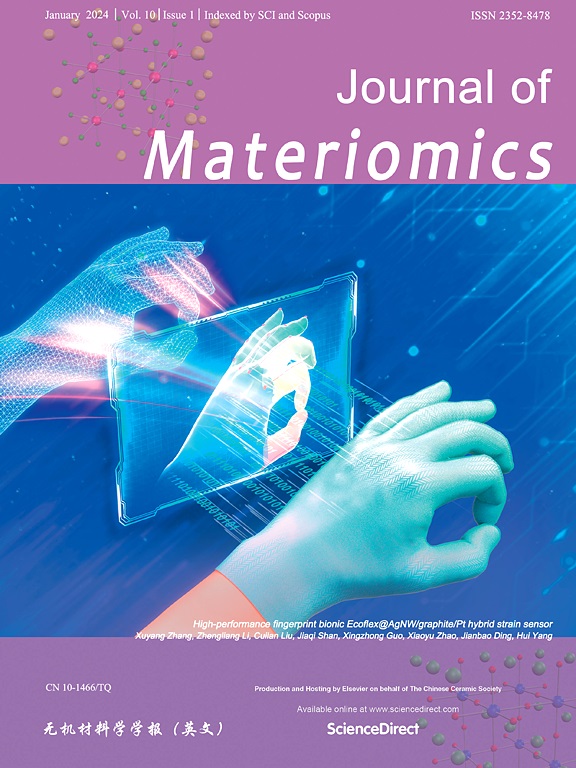Harnessing the power of temperature gradient-enhanced pyroelectricity: Self-powered temperature/light detection in Ce-doped HfO2 ferroelectric films with downward spontaneous polarization
IF 8.4
1区 材料科学
Q1 CHEMISTRY, PHYSICAL
引用次数: 0
Abstract
Ferroelectric materials are ideal for self-powered sensors in Internet of Things (IoT) and high-precision detection systems due to their excellent polarization properties. Compatibility with miniaturization, high-density systems, and complementary metal oxide semiconductor (CMOS) processes is crucial for their widespread adoption. HfO2-based ferroelectric films show potential in self-powered pyroelectric sensors as their thinness enables effective temperature and light detection. However, the disordered ferroelectric domain distribution limits their pyroelectric performance and hampers the development of highly integrated self-powered pyroelectric devices. This report investigates the temperature and light detection capabilities of Ce-doped HfO2 ferroelectric films, which exhibit as-grown spontaneous polarization in the downward direction, making them a promising option for self-powered pyroelectric sensors. The findings provide robust evidence that the introduction of a temperature gradient significantly enhances pyroelectricity. In addition, their applications in the detection of hot/cold wind and breathing have been proved. Notably, the 30 nm thick Ce-doped HfO2 ferroelectric film has a high pyroelectric coefficient of about 894.7 μC·m−2·K−1 and enables high-precision detection of changes in temperature of 0.1 K. This study highlights the potential application of HfO2-based ferroelectric films in self-powered sensors with temperature and light detection capabilities, making them a promising candidate for future IoT-based systems and high-precision detection systems.

利用温度梯度增强热释电的力量:具有向下自发极化的掺铈 HfO2 铁电薄膜中的自供电温度/光探测功能
本文章由计算机程序翻译,如有差异,请以英文原文为准。
求助全文
约1分钟内获得全文
求助全文
来源期刊

Journal of Materiomics
Materials Science-Metals and Alloys
CiteScore
14.30
自引率
6.40%
发文量
331
审稿时长
37 days
期刊介绍:
The Journal of Materiomics is a peer-reviewed open-access journal that aims to serve as a forum for the continuous dissemination of research within the field of materials science. It particularly emphasizes systematic studies on the relationships between composition, processing, structure, property, and performance of advanced materials. The journal is supported by the Chinese Ceramic Society and is indexed in SCIE and Scopus. It is commonly referred to as J Materiomics.
 求助内容:
求助内容: 应助结果提醒方式:
应助结果提醒方式:


